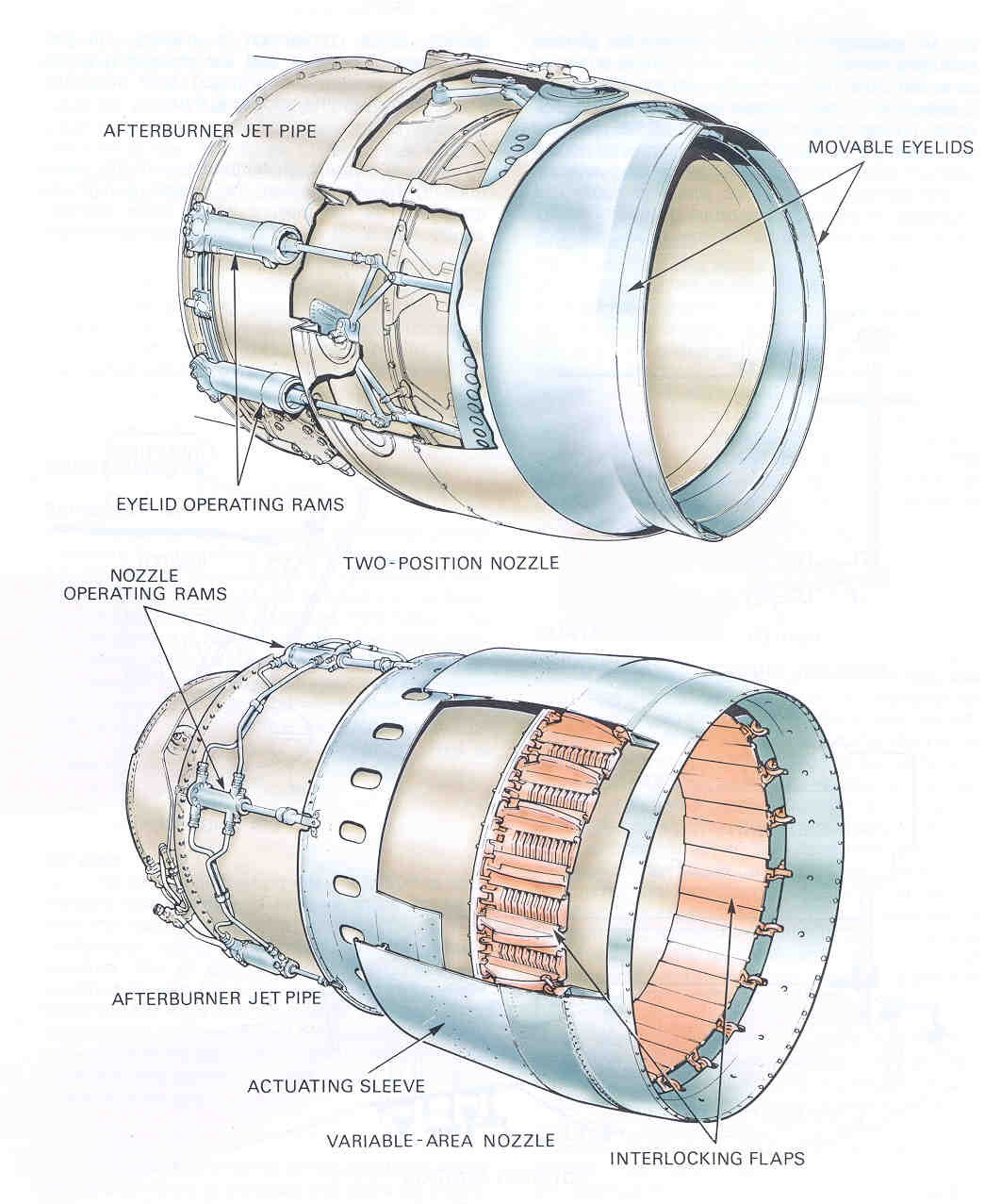
 An increase in power for jet turbines could be accomplished by using a
larger engine, but due to an increase in weight, frontal area, and
overall fuel consumption, afterburning provides the best method of thrust
augmentation for short periods of time.
An increase in power for jet turbines could be accomplished by using a
larger engine, but due to an increase in weight, frontal area, and
overall fuel consumption, afterburning provides the best method of thrust
augmentation for short periods of time.
The fuel in a turbine engine burns in an excess amount of air, providing
sufficient amounts of oxygen to support further combustion. Because of
this, it is possible to inject additional fuel for burning downstream of
the turbine, increasing the overall thrust of the jet engine.

Since the temperature of an afterburner can reach 1700 deg. C, the flame
is usually concentrated around the jet pipe axis, allowing a portion of
the discharge gas to flow along the wall of the jet pipe and therefore
maintain a safe wall temperature.
An afterburning jet pipe is larger than a normal jet pipe would be so as
to obtain a reduced velocity gas stream. Therefore, an afterburning jet
pipe is equipped with either a two-position or a variable nozzle to
provide for operation under all conditions. The nozzle will open or close
to give an exit area suitable for the volume of the gas stream, which
prevents any pressure increase from occuring in the jet pipe.
Afterburning is acheived on low by-pass engines by mixing the by-pass and
turbine streams before the injection of the afterburner fuel. With this,
combustion takes place in the mixed exhaust stream. Another method is to
inject the fuel and stabilize the flame individually in the by-pass and
turbine streams, burning the available gases to a common exit temperature
at the nozzle's exit.
 Back to the Purdue AAE Propulsion main page.
Back to the Purdue AAE Propulsion main page.
 Back to the Turbine Engine Basics page.
Back to the Turbine Engine Basics page.
 Back to the Purdue AAE Propulsion main page.
Back to the Purdue AAE Propulsion main page.
 Back to the Turbine Engine Basics page.
Back to the Turbine Engine Basics page.


